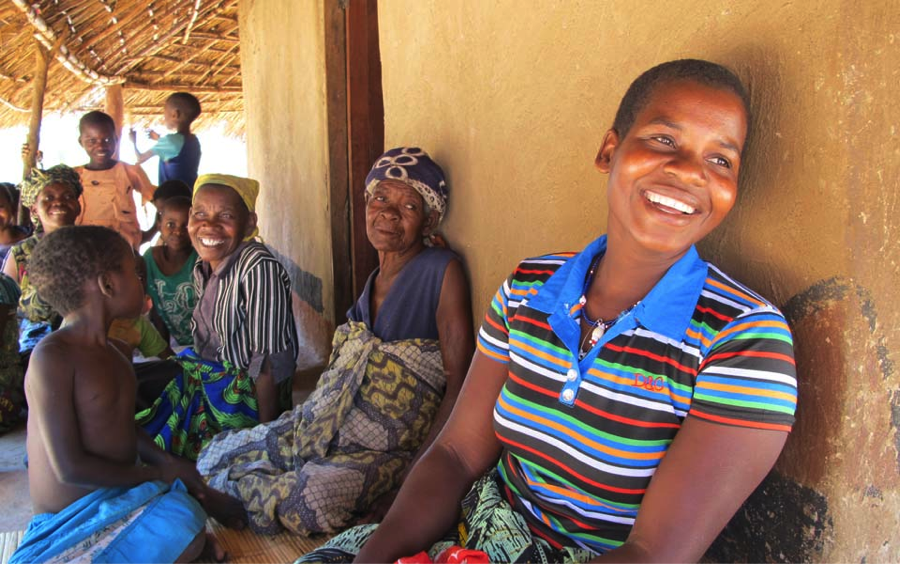 What is Obstetric Fistula?
What is Obstetric Fistula?
Obstetric fistula is a debilitating birth injury that affects an estimated 2 to 3 million women, most in sub-Saharan Africa. Primarily due to obstructed labor from cephalopelvic disproportion1 or malpresentation2 with delays in accessing comprehensive emergency obstetric care; up to 100,000 new cases occur each year. Survival is bittersweet; women with obstetric fistula have endured lengthy and painful labors only to often lose their babies and face drastically changed lives, marred by their severe physical injuries and the associated psychosocial and economic consequences. Women with obstetric fistula typically suffer urinary and/or fecal incontinence. They experience infections, vaginal and genital ulcerations, and the sequelae of nerve damage such as foot drop. Many women also become infertile. The physical effects of obstetric fistula overwhelm these marginalized women, yet the psychological effects can be even more devastating. Constantly leaking urine and/or feces, obstetric fistula sufferers are often stigmatized and ashamed. They are isolated from others, frequently abandoned by husbands and families and ostracized from their communities. They lose everything; they can no longer be wives, mothers, friends, workers, or worshippers. They quickly become destitute.
Prevention
Obstetric fistula is largely a preventable condition. Greater prioritization of global women’s reproductive health including ensuring universal access to high quality obstetric care and reducing childbearing during vulnerable developmental periods through innovative social interventions could achieve drastic reductions in fistula incidence. Such efforts require strong government commitment to health systems strengthening and a focus on empowering girls and women.
Obstetric Fistula Treatment
Surgery is available to treat obstetric fistula, and clinical success rates range from 60% – 90%. The availability and accessibility of surgery has been increasing over the past decade in conjunction with specialty training and funding. However, despite the observed and predicted increases in surgical repair capacity, providing surgical treatment for the 2-3 million women with obstetric fistula will take several decades, not including incident cases.
 Focus on Reintegration– Beyond Repair Study in Uganda
Focus on Reintegration– Beyond Repair Study in Uganda
Previous research on obstetric fistula repair has focused primarily on clinical outcomes of the surgery, without considering what is arguably the real goal of repair – the success of the woman’s reintegration into her family and community. We know little about how the repair affects a woman’s quality of life and her ability to regain her roles in her community. An essential step toward understanding reintegration is to develop an appropriate measurement tool as none currently exist. The Safe Motherhood Program is working to bridge this knowledge gap through collaborative research on family and community reintegration after obstetric fistula surgery with the Department of Obstetrics and Gynaecology at Makerere University School of Medicine and Mulago National Referral Hospital in Kampala, Uganda. The specific aims of the project are:
- To better understand the process of family and community reintegration post obstetric fistula surgery.
- To modify and pilot test a measurement tool to assess long term success of family and community reintegration among women returning home after obstetric fistula surgery, through a mixed-methods approach.
- To assess the feasibility of long term follow-up of reintegration after fistula surgery utilizing mobile phone technology.
Our research team has conducted qualitative work among women who have returned to their families and communities after obstetric fistula repair. The lived experiences shared by these women emphasized the extreme physical and psychological disability they experienced, and our analysis identified several key themes that were used to develop an instrument to measure reintegration success. We are currently piloting this instrument among a longitudinal cohort of Ugandan women that we are following from care-seeking presentation through 12 months post-surgery.
This work is an early step towards developing a reliable and valid tool for measuring the success of post-surgical family and community reintegration for women with obstetric fistula and complements other programming to increase the number of surgeries. As more obstetric fistulas are repaired, it is essential to focus on enhancing women’s post-surgical family and community reintegration. Furthermore, the fact that this is the first study of its kind to occur in Uganda, a country with a high prevalence of obstetric fistula, will help to discern the lived experiences of these women and their needs within this particular cultural and political context.
1 Cephalopelvic disproportion: the baby’s head is too big to fit through the mother’s pelvis
2 Malpresentation: the baby is not positioned head first which is more challenging position for delivery

Recent Comments